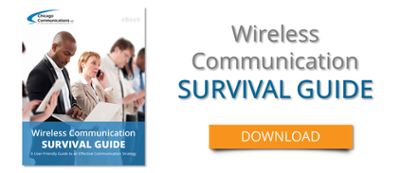
An Update from the FREQ Squad's Ann Tenna
Have you ever thought about the antenna on the end of your radio or the ones on top of a tower or building? Probably not much. But there's a lot more to an antenna than what meets the eye. It’s not just a stick that gets installed there; it is actually a tuned circuit which becomes part of the radio (or the system) itself. This antenna circuit resonates on a specific frequency band. Antennas work to amplify coverage, making them a Very-Important-Part (VIP) of the radio system working well. And since I happen to be an expert in this area, I've put together a list of things to help you become an expert too.
First, you must know that all radios have the same thing in common. They transmit and/or receive, they have a specific frequency and they have a specific power level when transmitting. In typical two way radios we see VHF (150Mhz) and UHF (450Mhz) bands that are common with Public Safety and Business band radios. All transmitters that are emitting power usually do this at a 50 ohm impedance. This impedance is the reactive load for the output of the device. When transferring power or RF energy, you need to insure that your loads match. Thus a 50 ohm load must transfer all the way to the antenna.
Now let's get to the heavy stuff. When designing a radio system, the antenna is a crucial component. You want to maximize the RF energy from your radio to be radiated from your antenna. The antennas are specified with some of the following considerations:- Maximum Power – The amount of RF that they can typically handle without failing. An antenna that is rated at 100 watts will work effectively at that power. If we run it at 150 watts our risk of shortening the life of the antenna increases.
- Frequency – All antennas are rated in frequency. This is key to insure our TUNED antenna circuit matches our frequency. We do not want to use a 450Mhz antenna on a 150Mhz transmitter. Power transfer will be poor as the antenna is resonating on the wrong band.
- Gain – Each antenna has a gain figure. Whether in dBi or dBd, the value tells us that for a specific power input, the antenna will re-radiate that power at an effective higher level. For instance, if we input our 100 watts into the base of a 3dBd gain antenna, the corresponding effective power radiated will be about 200 watts.
- Beam width – Beam width usually corresponds to the gain of the antenna. A higher gain antenna will have a smaller beam width. This is the angle at which an antenna radiates. Picture an antenna stick that is 10 feet high. At the center of the antenna the radiation pattern goes up and down. The envelope of that pattern is the beam width. A unity gain antenna may have a 78 degree envelope where a 9dBd antenna may have a 15 degree envelope. This may come into play where extending your coverage farther out is required.
- Wind Load – Many of the VHF antennas are up to 20 feet in length. Imagine installing many of these on a tower. They act like a sail in the wind and create a drag on the tower structure itself. Thus too many antennas can create stress which can fail a tower.
- Weight – Again similar to wind load, the weight of the antenna will create stress on a structure which can become a safety concern if exceeded. Many towers are rated with specific wind and weight loads.
These are just a few of the considerations. In addition you need to watch what you mount to. Many antenna structures can create a dome effect or null zone directly below the structure. Picture a water tower. One thousand feet away you can see the antenna, yet underneath of the water tower you are shielded from it. This dome effect creates a dead zone around the structure.
All of the components of antenna theory are key to properly designing a system. It helps you achieve your Effective Radiated Power (ERP) on the FCC License and it insures you maximize your coverage through proper power transfer. Bigger is not always better in this case. Coverage modeling helps to show the factors mentioned above. In addition, propagation is a science used to analyze the strength of the signal received and transmitted by the antenna. If any of this has you confused, the engineers at Chicago Communications have the capability to complete a potential review and propagation analysis for you and they can walk you through it step by step. This keeps the guesswork out of: “I wonder how far my radio system will cover”. To learn more or to receive a propagation analysis from the experts click the following link: Accurate Antenna Systems Mean Maximized Results .
Now that I've laid out the most important factors to consider I hope you'll put your systems to the test. Because the important thing to take away here is that maximizing your investment is the key to good radio coverage. If you have a system that's already been built and you're experiencing dead spots, your next lesson is to learn how to boost indoor coverage, and I've got a solution for you right here. Until next time, remember: “Without antennas, communication just wouldn’t be the same.” Catch you later! -Ann
 This has been another update from the ChiComm FREQ Squad! They'll be popping in every month on the blog to give you helpful hints and tell you about the latest happenings for all things 'freq-y & geeky'. They'll be sharing valuable information related to two-way communications equipment & accessories, important announcements about products, promotions, regulations and answers to frequently asked questions. For bio’s on each member click here. You can also find them on Twitter:@ccFREQsquad !
This has been another update from the ChiComm FREQ Squad! They'll be popping in every month on the blog to give you helpful hints and tell you about the latest happenings for all things 'freq-y & geeky'. They'll be sharing valuable information related to two-way communications equipment & accessories, important announcements about products, promotions, regulations and answers to frequently asked questions. For bio’s on each member click here. You can also find them on Twitter:@ccFREQsquad !



